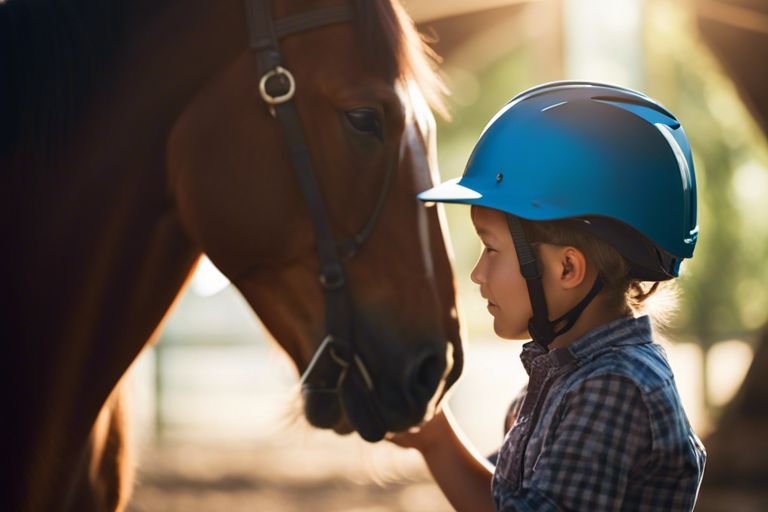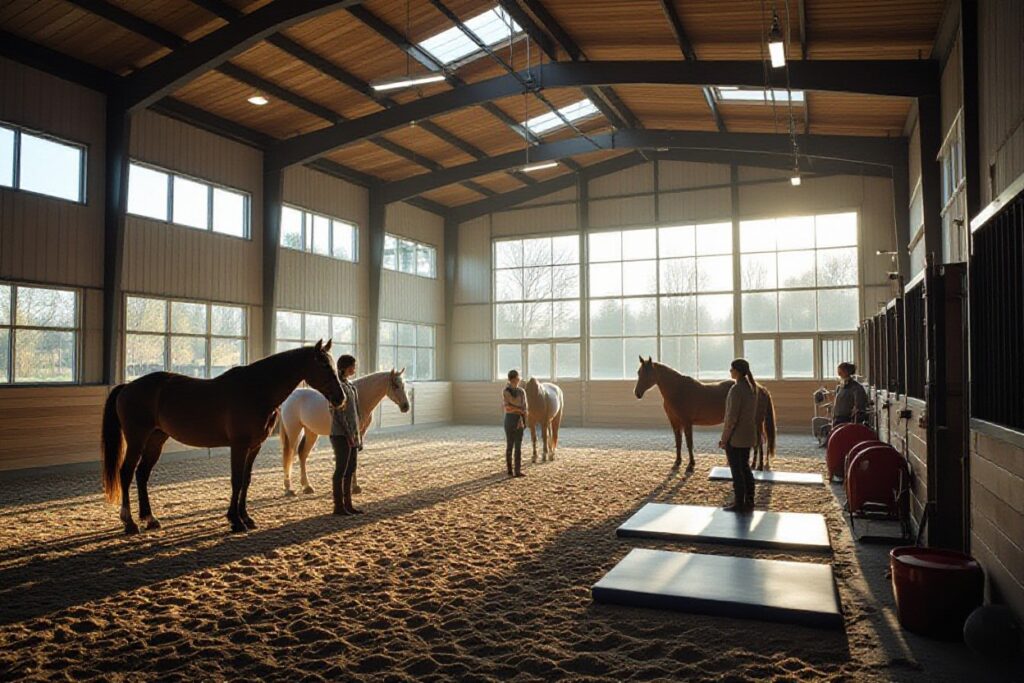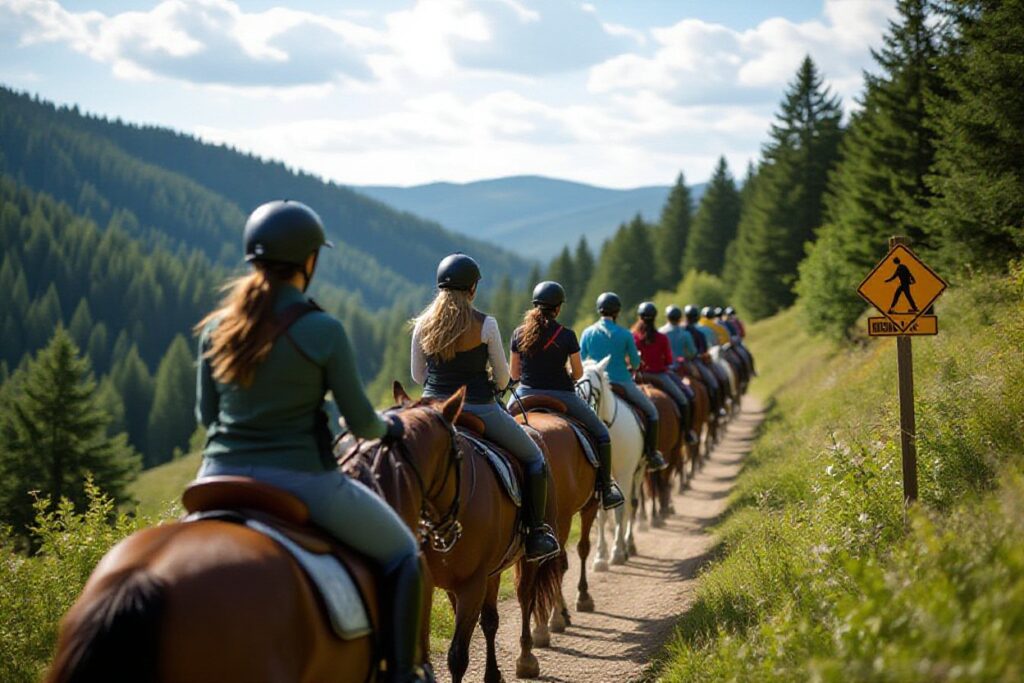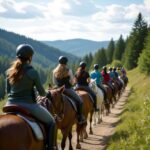Most importantly, when introducing horses to young children, safety should be your top priority. To ensure a positive experience, it is crucial to take certain precautions and follow guidelines to minimize any risks. By slowly introducing the horse to the child in a controlled environment and supervising their interactions, you can create a safe and enjoyable experience for both the child and the horse.
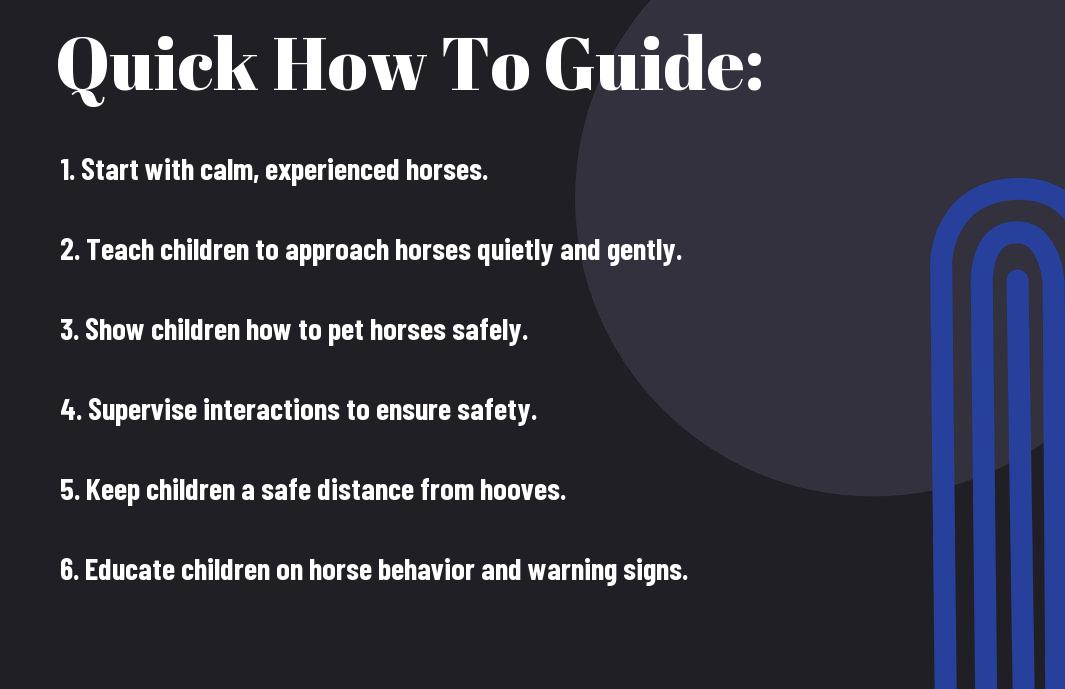
Understanding Horse Behavior and Body Language
Before you introduce your child to a horse, it’s important to understand horse behavior and body language. This knowledge will help you ensure a safe interaction between your child and the horse.
Recognizing Horse Temperaments
Horses have different temperaments, just like people do. Some horses may be calm and gentle, while others may be more high-strung or easily startled. It’s important to assess the temperament of a horse before allowing your child to interact with it. Look for signs of friendliness, like approaching with ears forward and a relaxed body, or signs of nervousness, like pinned back ears and a tense stance.
Identifying Warning Signs of Aggression
Recognizing the warning signs of aggression in a horse is crucial for keeping your child safe. Aggressive behaviors can include ears pinned back, teeth bared, kicking, or charging. If you notice any of these signs, it’s important to remove your child from the situation immediately and seek assistance from a knowledgeable adult.
When a horse displays these aggressive behaviors, it is important to respect the signals and give the horse space. Aggression is the horse’s way of communicating discomfort or fear, and it’s best to address the underlying issue rather than force an interaction.
Understanding Horse Communication
There’s a lot more to horse communication than meets the eye. Horses use a combination of body language, vocalizations, and facial expressions to communicate with each other and with humans. By understanding these signals, you can better interpret how a horse is feeling and react accordingly.
To ensure a positive interaction between your child and a horse, it’s important to pay attention to the horse’s body language and respond accordingly. By being aware of these cues, you can help create a safe and enjoyable experience for both your child and the horse.
Preparing Your Child for Horse Interaction
Educating Children on Horse Safety
Some children may not be familiar with horses and their behavior. It is important to educate your child on basic horse safety rules before allowing them to interact with a horse. Teach your child to stay calm and quiet around horses, as sudden movements or loud noises can startle them. Explain the importance of not approaching a horse from behind and to always ask permission before petting or feeding a horse.
Teaching Children How to Approach Horses
An important aspect of preparing your child for horse interaction is teaching them how to approach horses properly. With your child, demonstrate the correct way to approach a horse by approaching slowly from the side, allowing the horse to see and sniff them. Encourage your child to speak softly and gently when near the horse to establish trust and not startle the animal.
Children should be taught to avoid sudden movements, loud noises, and never to approach a horse while eating or with an unfamiliar object. Remind your child to always be cautious around horses and to respect their space.
Building Trust Between Children and Horses
Some children may feel nervous or intimidated by the size of a horse. It is crucial to help your child build trust and confidence around horses. Encourage your child to spend time observing horses from a distance before attempting to interact with them. Teach your child to approach horses with a calm and confident demeanor, as horses can sense fear and hesitation.
Horses are highly intuitive animals and can pick up on your child’s emotions. Encourage your child to show patience and respect towards the horse, as this will help establish a positive and trusting relationship between them. With time and guidance, your child will learn how to interact safely and harmoniously with horses.
Safety is key when introducing horses to young children. As a parent or guardian, it’s vital to prioritize the well-being of both the children and the horses. This guide will provide you with tips and strategies to ensure a safe and positive experience when introducing the magical world of horses to your little ones.
Over time, introducing horses to young children can create a special bond and love for these majestic animals. However, it is crucial to take precautions to ensure safety for both the children and the horses. By following these tips, you can successfully introduce horses to young children in a safe and enjoyable way, setting the foundation for a lifetime of equine appreciation.
Safety Precautions and Equipment
Essential Safety Gear for Children
One of the most important aspects of introducing young children to horses is ensuring their safety. When children are around horses, it is crucial that they wear the appropriate safety gear. This includes a properly fitted riding helmet to protect their heads in case of a fall or kick. Additionally, sturdy closed-toe shoes with a small heel should be worn to prevent feet from slipping through stirrups or getting stepped on.
Creating a Safe Environment for Horse Interaction
With young children around horses, it is vital to create a safe environment for interaction. Always ensure that any interactions take place in a controlled and supervised setting. Keep a safe distance from the horse’s hind legs, as they can kick unexpectedly. Teach children to approach horses from the side and avoid standing directly in front of or behind them.
Safety Tip: Make sure the area where children interact with horses is free from any hazards such as sharp objects, poisonous plants, or loose fencing that a horse could potentially get tangled in.
Emergency Procedures and First Aid
One of the most critical aspects of introducing children to horses is being prepared for emergencies. It is vital to have a plan in place in case of an accident or injury. Ensure that you have a well-stocked first aid kit readily available that includes items such as bandages, antiseptic ointment, and instant ice packs.
If an accident occurs, remain calm and assess the situation. If medical attention is required, contact emergency services immediately. It is crucial to have a clear understanding of basic first aid procedures for both human and equine emergencies.
Supervision and Monitoring
The Role of Adult Supervision in Horse Introduction
Not having adequate adult supervision during the introduction of a horse to a young child can pose serious risks. It is crucial that an experienced adult is present to guide and oversee the interaction between the child and the horse. This adult should have a good understanding of horse behavior and be able to intervene if necessary to ensure the safety of the child.
Monitoring Child-Horse Interactions
Any time a child is with a horse, it is important to closely monitor their interactions. Watching how the child behaves around the horse and how the horse reacts to the child is vital in ensuring a safe introduction. Keep a close eye on both the child’s body language and the horse’s behavior to identify any potential signs of discomfort or danger.
Supervision plays a key role in ensuring the safety of the child during interactions with the horse. By monitoring their interactions closely, you can intervene quickly if any risky behavior or situations arise. Additionally, having an adult present helps to create a sense of security and assurance for both the child and the horse.
Identifying Potential Risks and Hazards
This involves constantly monitoring the environment and the behavior of the child and the horse. Look out for any signs of stress or aggression from the horse, as well as any reckless or dangerous behavior from the child. Identifying potential risks and hazards early on can prevent accidents and injuries.
Identifying and addressing any potential risks or hazards during the introduction process is crucial for the safety of the child and the horse. By staying vigilant and observant, you can help create a positive and safe experience for both the child and the animal.
Summing up
Following this guide can help you safely introduce horses to young children. By starting with brief interactions in a controlled environment, teaching children about horse behavior and safety measures, and gradually exposing them to more activities with the horses, you can ensure a positive and enjoyable experience for both the children and the animals. Remember to always prioritize safety and supervision when children are around horses to prevent any accidents or injuries.
Q: Why is it important to safely introduce horses to young children?
A: It is important to safely introduce horses to young children to prevent accidents or injuries that can occur when dealing with large animals. Proper introduction ensures a positive experience for both the child and the horse.
Q: What are some safety tips to consider when introducing horses to young children?
A: Some safety tips to consider include supervising the interaction at all times, teaching children how to approach and pet the horse, and establishing boundaries for both the child and the horse.
Q: How can I prepare a child for their first interaction with a horse?
A: You can prepare a child for their first interaction with a horse by explaining basic horse behavior, demonstrating how to properly approach and pet the horse, and ensuring they understand the importance of following safety guidelines.
Q: Are there any specific guidelines for teaching children how to ride a horse safely?
A: Yes, when teaching children how to ride a horse, it is important to start with proper riding lessons from a certified instructor, provide them with appropriate safety gear, and always supervise their riding activities.
Q: How can I ensure a positive experience when introducing a horse to young children?
A: To ensure a positive experience, take time to build trust between the child and the horse, create a calm and relaxed environment for the interaction, and always prioritize the safety and well-being of both the child and the horse.

